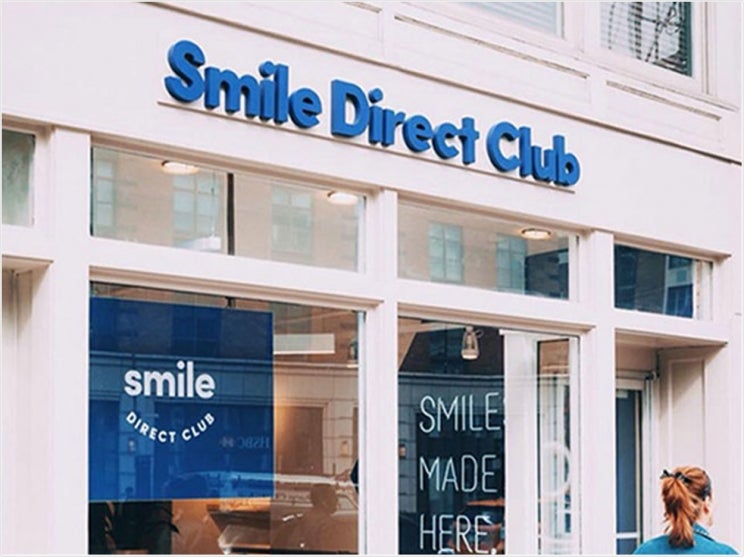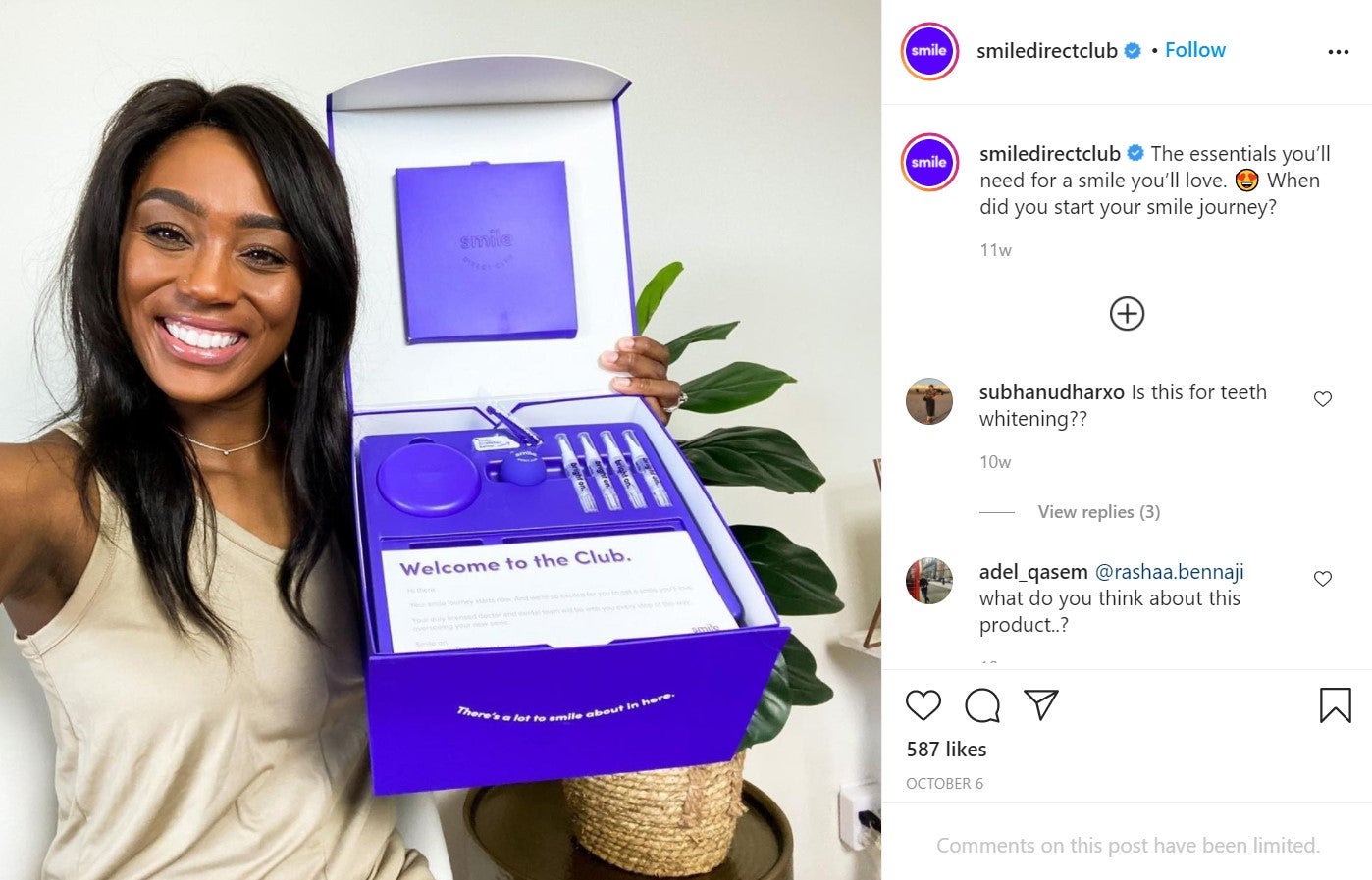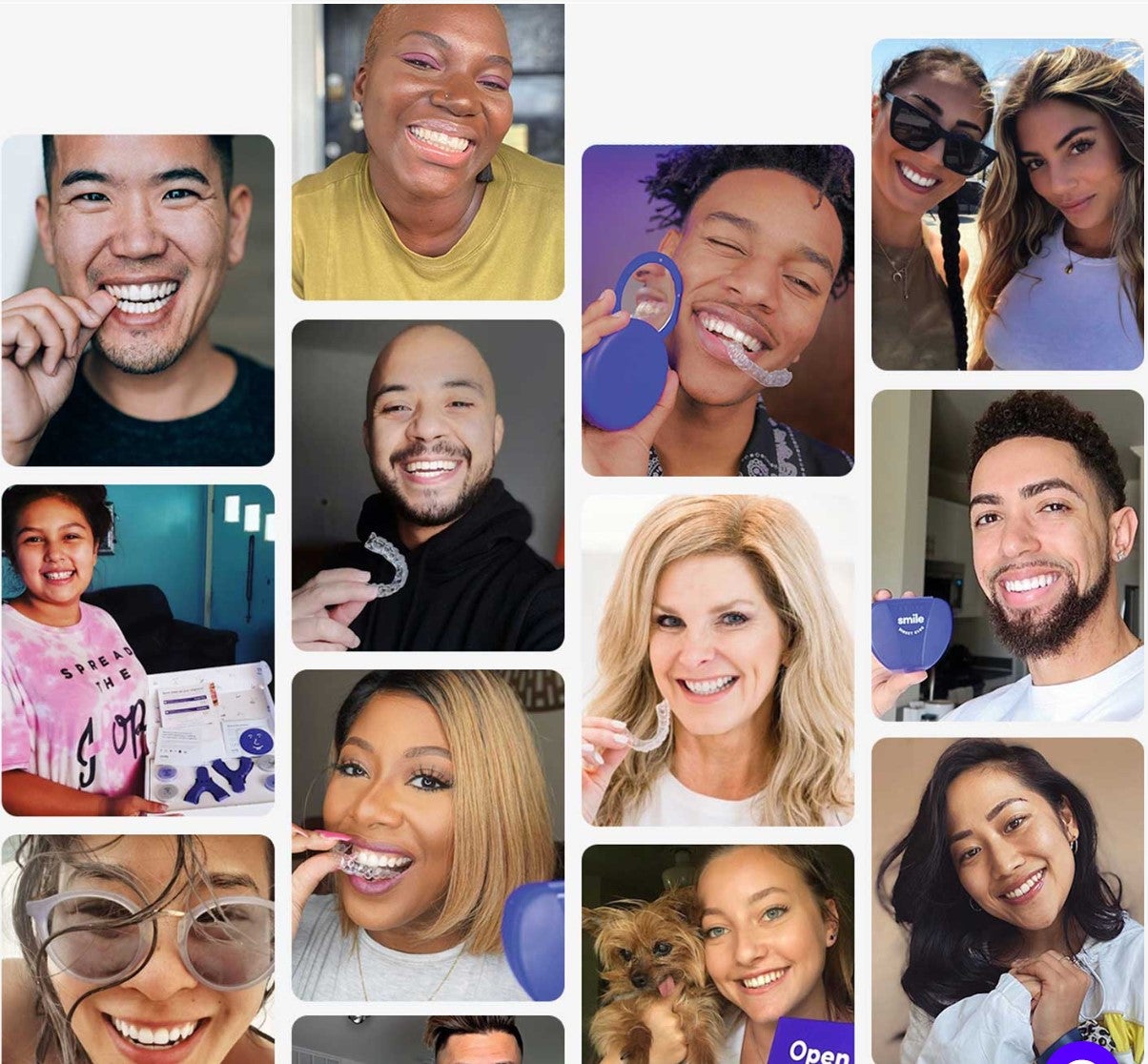How to Build Brand Recall in a Clickless World
Brand awareness is dwindling in organic search. Here's your strategy for building brand equity and recall by leveraging brand awareness. Learn more here.
Read More
Gone are the days of scheduling several trips to the dentist and paying upwards of $8,000 for braces just to achieve straight teeth. Now, you can simply order an impression kit, make a 3D mold of your teeth, and receive invisible aligners regularly — all from the comfort of your own home.
In true direct-to-consumer (D2C) fashion, SmileDirectClub has managed to transform something as mundane as orthodontics into a fashionable and efficient experience. So, how did this teledentistry company disrupt the status quo? How can other brands shed their outdated, ineffective marketing strategies and learn from their model instead? Here’s the story of SmileDirectClub:
Did you know that 60% of counties in the United States do not have an orthodontist office? Because of the inaccessible and unaffordable nature of teeth straightening, only 1% of Americans receive orthodontic care each year.
Realizing that removing these barriers can pose a huge business opportunity, Jordan Katzman and Alex Fenkell founded SmileDirectClub in 2014. By leveraging a new supply chain and D2C strategy, the company was able to operate at a lower price point than its competitors and offer better deals to customers.
Since then, SmileDirectClub has exploded with popularity:
With more than half a million customers, the company posted $750 million in revenue in 2019. Now, their founders have their sights set on global expansion.
Image: Dentistry Today
Staying true to their motto of “Smiling is contagious. Join the club,” SmileDirectClub has focused on a social approach to their marketing. Although they run TV and over-the-top (OTT) platform ads, social channels — including Facebook, Instagram, Pinterest, and more recently TikTok — form the bulk of their marketing efforts. Some of their social campaigns include:
Opting for a social strategy has helped the brand boost its customer acquisition rates, as potential customers can quickly grasp the “what” and “why” of the brand. By putting real faces and stories behind the product, the company’s marketing efforts feel authentic and trustworthy. But beyond that, the brand has helped build a community of existing customers who can support and motivate each other’s dental transformation journeys.
Image: SmileDirectClub
From: SmileDirectClub Instagram
As with other D2C brands, SmileDirectClub is notorious for moving fast, thanks to their data-first approach and in-house marketing agency. “We like to say that we fly the plane by the instruments, and the instruments are the data,” said SmileDirectClub’s CMO, John Sheldon, in an interview.
For brands that need to iterate in real-time, having internal creatives, analytics, and media groups can be hugely beneficial. For example, after gaining new insight into how Americans think about daily budgets, SmileDirectClub’s strategists, copywriters, and designers launched a whole campaign revolving around new value propositions in half a week. Now that’s moving fast.
Even though SmileDirectClub pushes a majority of its marketing dollars toward digital channels, it uses trigger-based direct mail, too. For example, they will mail resources to customers who, based on their digital behaviors, are struggling to use their teeth impression kits. Not only do these resources provide practical information, such as how to replace a lost aligner, but they also tap into the emotional aspect of improving your smile (self-esteem and mental health).
Though the pandemic has delivered big wins to e-commerce retailers, Americans have had less discretionary spending for cosmetic treatments. In fact, SmileDirectClub’s revenue dropped by almost 45% in Q2 this year compared to 2019.
But that didn’t deter the company, which still spent $35 million on sales and marketing that quarter. As initial panic over the pandemic quelled, more Americans opted for dental treatments since they were masking up anyway. Placing a big bet with a heavy investment in marketing paid off — about 60% of the customers they obtained since were not prior leads.
Image: SmileDirectClub
SmileDirectClub is just one of the many D2C disruptor brands. If you’re looking for a partner to help replace ineffective marketing tactics in your quest to transform your industry, take a look at some of the features we offer here at AdRoll.
Last updated on December 2nd, 2022.


